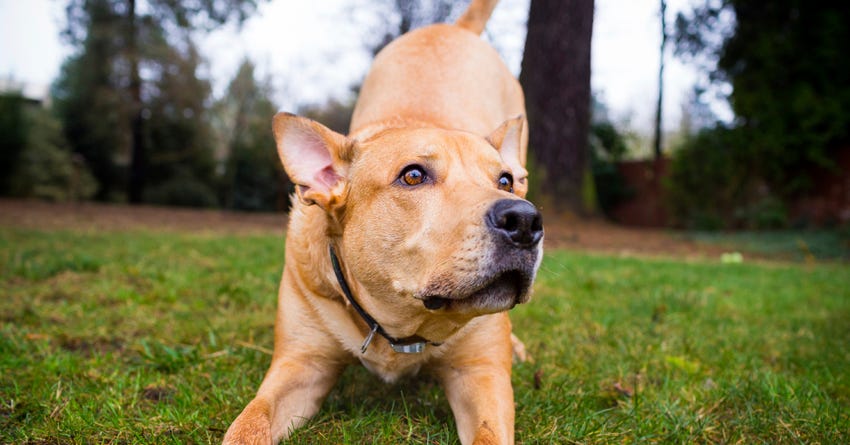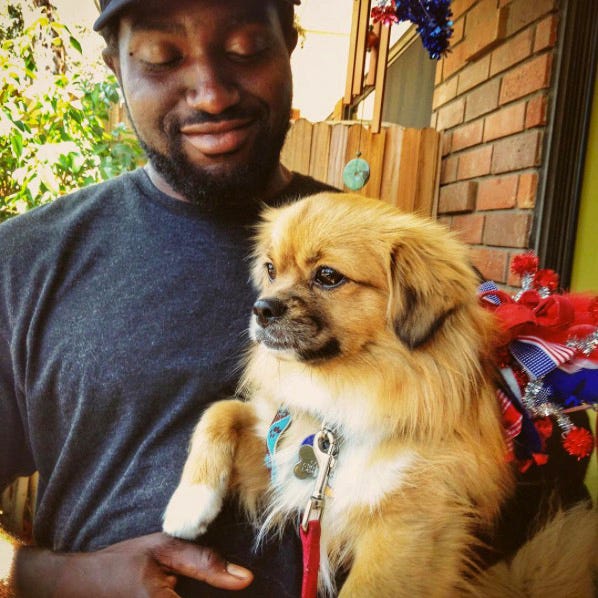Teaching Your Dog Good Manners: An Interview with Professional Dog Trainer David Wright

A well-behaved dog with impeccable manners isn't just born that way.
Training your dog to behave when other people are around takes work and commitment but the rewards are well worth it. We talked to Los Angeles-based professional dog trainer David Wright to better understand what goes into raising a dog with good manners. Wright is the owner of iWorkDogs, which specializes in helping people create better relationships with their dogs through obedience. Wright is an AKC Canine Good Citizen evaluator and a professional member of the Association for Professional Dog Trainers.THE HONEST KITCHEN: Rather than locking your dog away when guests come over for dinner, how can you help him understand what his place is?
DAVID WRIGHT: The best thing to do to prevent begging or stealing food is teaching your dog to go to his bed. This is essentially a place command where your dog goes to his bed and doesn’t come off until he is released. Start off by placing the bed in a location that allows the dog to see the table and you to see the dog. Try to put the bed in a corner so the dog is surrounded by two walls. Next you want to put your dog on a leash, say "go to your bed" and lure the dog to the bed with a treat. Once the dog is all the way on the bed, say "good" and toss the treat on the bed. It is very important that the treat come from the bed and not your hand. Tell the dog "stay on your bed" and back up a couple of steps. If the dog doesn’t come off, say "good" and walk back and drop a couple of treats on the bed. As the dog starts to understand, you can increase your distance, duration and distraction. A major piece that folks forget about when doing this is that you need to train it before you need to use it. Don’t wait until you have a dinner party of 10 and try to get your dog to stay on his bed. You need to practice this with your dog everyday. It should become part of his daily routine. Incorporating your dog into your daily family life makes for a more enriched pet experience. Though crating or confining your dog may be useful in the beginning, as your dog matures, you want them to fit more and more seamlessly into your life.THK: What's the proper behavior to greet people when they arrive? Any tips on how to do this?
DW: One thing you can do when guest arrive is to put your dog on a down stay. When your guests walk in, you can give your dog the command to go visit. This frees the dog from his stay and allows him to go up to your guest. At this point the dog should sit politely for petting. The down stay and go visit are separate commands and must be taught individually. Assuming your dog knows down, you can get him to stay pretty easily. Say stay, wait a heartbeat, say good and place the treats on the ground between the dog’s legs. You should be right in front of your dog when you start off. Repeat this 2 or 3 times. To add distance, duration and distractions, start gradually stepping further away, adding more distractions and for longer periods of time. If the dog gets up, say no (don’t yell or get angry, you’re teaching) take him back to the exact spot, and repeat the procedure. If the dog keeps messing up, then lower the levels of distance, duration and/or distraction. Assuming your dog knows the sit command, have your dog on leash, send him to your guest and he will sit for a treat or petting. To train this behavior, start with your dog on a leash and employ the help of a friend or family member. Start by giving your helper a few treats. Next, have your dog in a sit with the helper standing in front. Next ask your helper to hold one of the treats eye level to the dog. Tell the dog go visit and encourage him to go forward. When he reaches the helper, have the helper ask him to sit. When the dog sits, the helper should say good and reward the dog with the treat. After your dog takes the treat, bring him back to you with the leash. Practice this as often as possible. Be prepared anytime you are having someone come over to go through this routine. If you have multiple guests, do it one by one. It may be a little while before your dog is ready to perform this command off-leash.
THK: How about reacting to the doorbell? How do you maintain the barking under control, especially if you're going to open the door and invite somebody in?
DW: Again, this is the perfect time to use a place command or go to your bed. The main thing here is you want to teach the dog to do something you do want as opposed to punishing them for doing something you don’t want. First, you want to leash your dog and have some treats handy. Next, have a friend or family member ring the bell. When the dog starts barking, don’t get up and go to the door. Instead, grab the dog’s leash and lead them to the bed or place that you’ve designated. Again, your “place” can be a dog bed, a rug or mat, anything that is large enough for the dog to lay down on and is a different material than the floor. Once the dog has all four feet on the place, you can put a treat down on the mat. You have to practice this and remain consistent. It won’t stop your dog from giving a warning bark, but eventually the doorbell will become a cue for your dog to run to the place or bed and wait for a treat.THK: What would you say are the worst signs of bad manners dogs exhibit in public/outside of the home?
DW: Something that screams “that dog needs more training” is pulling on the leash. Any type of pulling…any tension on the leash is a pull. Just because your dog isn’t dragging you down the street doesn’t mean they aren’t pulling. More often than not, people will hold their leashes tight or wrap them around their hand. You should be able to walk your dog down the street right by your side with slack in the line. Two things that promote pulling are retractable leashes because dogs have to pull to extend them. Secondly, most harnesses. A lot of people feel like harnesses are better options than collars, but think about how we use harnesses; they were created to allow for comfortable pulling. My advice on dealing with this behavior is pretty simple. Think about it this way; if a dog is tied to a tree, they are not going to keep running to the end of the leash. When training this behavior, you are that tree. The dog will learn how much space they have before they hit the end of the line. Here are Wright's tips on teaching your dog this concept:- First off, try to find an area that allows you enough space to walk back and forth with very little distraction from people, critters, or other dogs.
- Next, you want to start by standing at the right of the dog, his leg aligned with yours.
- Give the command “Let’s walk” and take off. Make sure to talk to the dog in a cheerful tone. You want to try and get the dog's attention before you move.
- Once you’re moving forward, if you feel any tension, don’t try to pull the dog with your arms, but do not stop either. Just keep moving forward. The dog will give in to the leash pressure. Once he does, praise him with a “good” to let him know he's in the right position.
- Keep walking forward in a straight line, and say “good” to the dog as he walks beside you.
- As soon as the dog begins to inch past you, let some of the leash feed out, then slow down, say “No, let’s walk,” and make an about turn and pat your thigh to encourage the dog to come back to your side. Gather up the slack in the leash you let out and continue.
- Repeat this as necessary until the dog is willingly turning with you.


